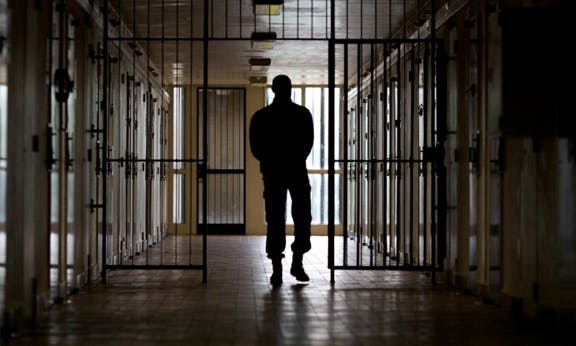Law and order hype drives increasing prison population

The public outcry following the assault and murder of Jill Meagher in Melbourne in 2012 contributed to the Victorian prison population increasing to record levels.
A new report, Victoria’s Prison Population: 2005 to 2016, released this month by the Sentencing Advisory Council, details the increase. “I think the courts and police are responding to the clamour in the community for tougher sentences”, SAC chairman Arie Freiberg told the Age.
The “clamour” Freiberg refers to was sparked by the killing of Meagher by Adrian Bayley when he was out on bail. Immediately, every commentator from Clementine Ford to Andrew Bolt embarked on a “tough on crime” crusade. They railed against “our country’s lax approach to probation and bail laws” (Ford), the way “certain perpetrators are let off with the equivalent of a slap on the wrist and a few minutes in the naughty corner” (Ford) and the “parole board culture [being] too kind” (Bolt).
Seizing the opportunity they had been granted, the Victorian police and state Liberal government were happy to fan the flames of this campaign.
Over the following months, they made sweeping changes, making access to bail and parole much more difficult. Bail allows women and men to be released between their arrest and trial, parole allows prisoners a period of time outside of prison, under strict conditions, before they complete their sentence.
Beyond the laws themselves, a wary atmosphere pushes against courts and police releasing people. They have become “risk adverse” about releasing people, said Freiberg.
The public campaign has subsided, but the legacy remains in the women and men incarcerated under these laws. Disproportionately poor, Aboriginal and extremely marginalised, they are reminders of the human cost of law and order campaigns.
Imprisoned awaiting trial
The number of prisoners serving sentences has decreased marginally, but it is more than made up for by those on remand, who now make up a third of the total prison population.
Waiting for trial or sentence, they spend an average of seven months interred. Many of them have not been convicted of a crime. Some will be tried and found not guilty, others sentenced to a term less than they have already served.
Prisoners in remand centres suffer while they wait out their time in purgatory. Overcrowding reduces access to rehabilitation programs. Police claim that they are too understaffed to reliably deliver them to their trials; magistrates and Legal Aid lawyers often do not know if their clients will appear on the day.
Defence lawyer Felix Ralph told the Age of his experience working for Legal Aid in Sunshine: “I think there’s about a 25 percent chance your client will turn up”. In the first two months of this year, more than 450 prisoners were not delivered to their scheduled court appearance.
The composition of the prison population reflects the oppression people face outside of prison. Many suffer from mental health problems and drug addiction. The number of Aboriginal and Torres Strait Islander prisoners has climbed 147 percent over the decade.
Fiona (not her real name) has worked for 20 years as a counsellor in prison. Now, she tells Red Flag, it is extremely difficult to be granted parole, and the choice of candidates has become unpredictable.
She spoke about the impact on prisoners of being arbitrarily denied parole. “People live up to the chance of parole. I work with them every week. This is why they get clean, why they behave, they look for housing – the whole time they are looking at parole.
“I knew an Aboriginal man, beautiful painter, he was supposed to get parole on 14 October for instance. 12 October comes – no parole. Then he’s told he can try again Christmas Eve. 23 December he gets another letter – no parole. If it’s like that, why would you even try to do better?
“I knew someone who paid rent for three months on a house so they would have housing when they left, but when that hope gets taken away, why wouldn’t you want a couple bourbons? And the drugs are rife. People need something to look to.”
This was a very predictable outcome of the outcry after Meagher’s death. As Louise O’Shea wrote at the time: “Moral panics about crime or violence between individuals, in particular the need to protect white women and children from harm, are almost always used by governments to promote reactionary ideas and to justify attacks on people’s rights”.
We cannot undo the damage done in 2012, but we can remember the lessons.